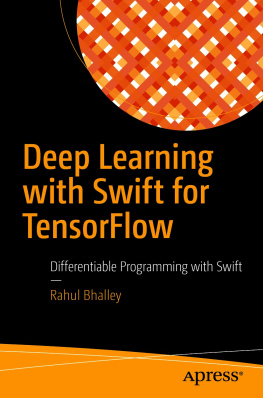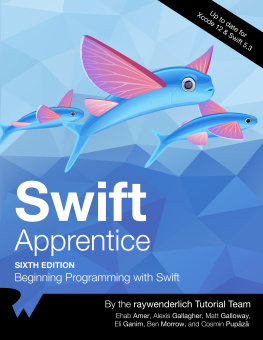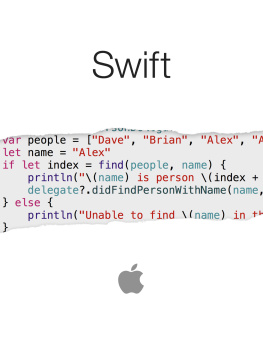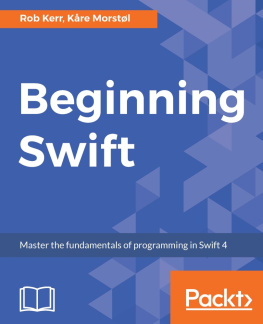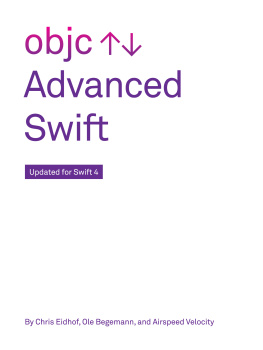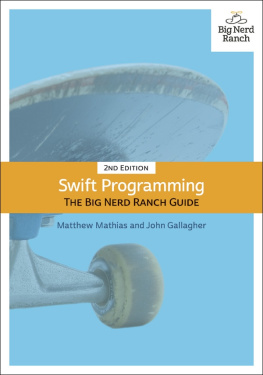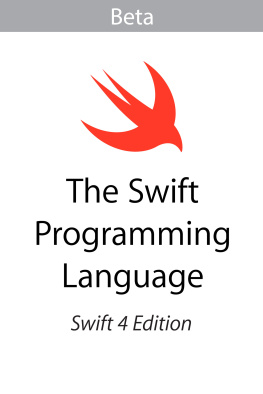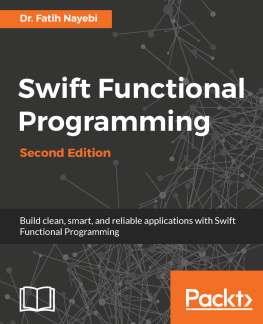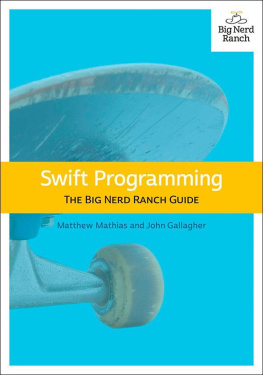Rahul Bhalley - Deep Learning with Swift for TensorFlow: Differentiable Programming with Swift
Here you can read online Rahul Bhalley - Deep Learning with Swift for TensorFlow: Differentiable Programming with Swift full text of the book (entire story) in english for free. Download pdf and epub, get meaning, cover and reviews about this ebook. year: 2021, publisher: Apress, genre: Children. Description of the work, (preface) as well as reviews are available. Best literature library LitArk.com created for fans of good reading and offers a wide selection of genres:
Romance novel
Science fiction
Adventure
Detective
Science
History
Home and family
Prose
Art
Politics
Computer
Non-fiction
Religion
Business
Children
Humor
Choose a favorite category and find really read worthwhile books. Enjoy immersion in the world of imagination, feel the emotions of the characters or learn something new for yourself, make an fascinating discovery.
- Book:Deep Learning with Swift for TensorFlow: Differentiable Programming with Swift
- Author:
- Publisher:Apress
- Genre:
- Year:2021
- Rating:4 / 5
- Favourites:Add to favourites
- Your mark:
- 80
- 1
- 2
- 3
- 4
- 5
Deep Learning with Swift for TensorFlow: Differentiable Programming with Swift: summary, description and annotation
We offer to read an annotation, description, summary or preface (depends on what the author of the book "Deep Learning with Swift for TensorFlow: Differentiable Programming with Swift" wrote himself). If you haven't found the necessary information about the book — write in the comments, we will try to find it.
Rahul Bhalley: author's other books
Who wrote Deep Learning with Swift for TensorFlow: Differentiable Programming with Swift? Find out the surname, the name of the author of the book and a list of all author's works by series.
Deep Learning with Swift for TensorFlow: Differentiable Programming with Swift — read online for free the complete book (whole text) full work
Below is the text of the book, divided by pages. System saving the place of the last page read, allows you to conveniently read the book "Deep Learning with Swift for TensorFlow: Differentiable Programming with Swift" online for free, without having to search again every time where you left off. Put a bookmark, and you can go to the page where you finished reading at any time.
Font size:
Interval:
Bookmark:
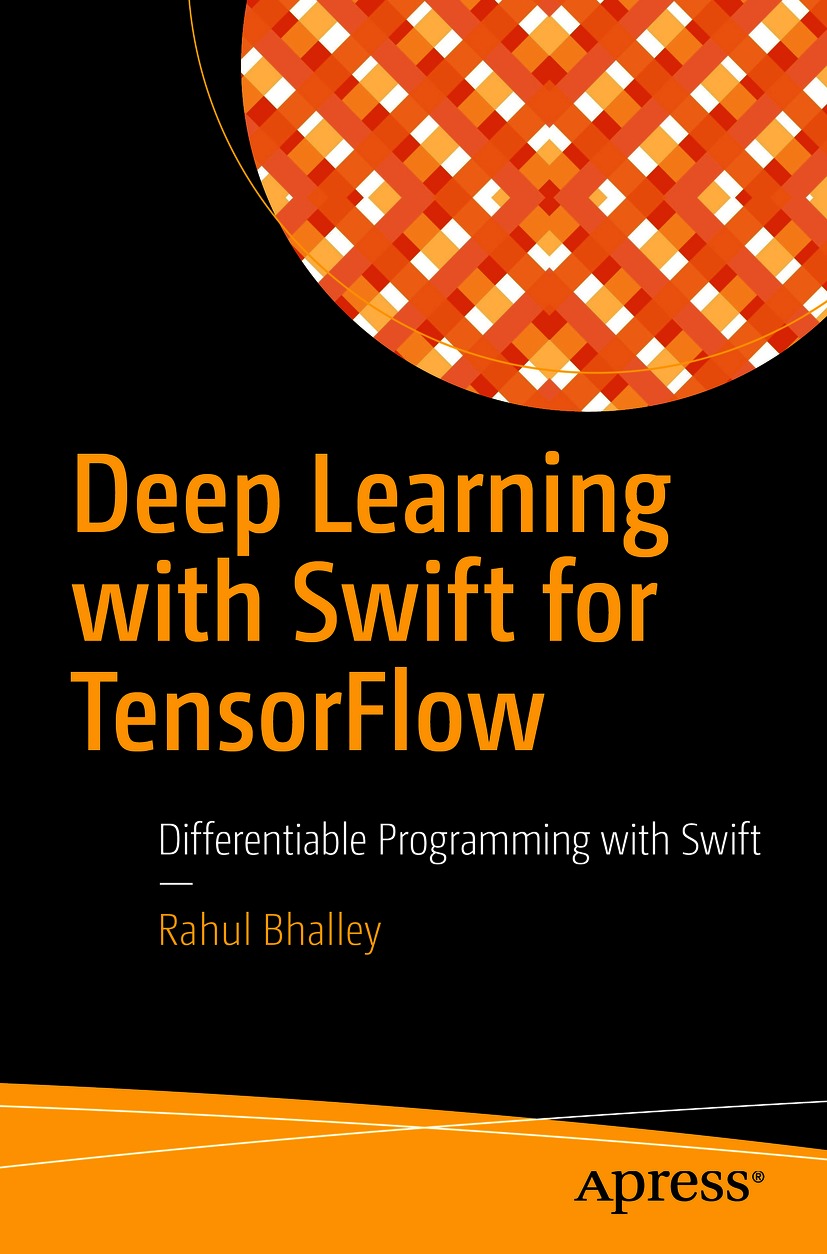

Any source code or other supplementary material referenced by the author in this book is available to readers on GitHub via the books product page, located at www.apress.com/978-1-4842-6329-7 . For more detailed information, please visit http://www.apress.com/source-code .
As a programmer and student pursuing graduation, I had a lot of trouble understanding deep learning by myself when I started this journey back in 2015. So I decided to write a deep learning programming book that might help people in a similar situation as mine to easily understand deep learning. I have tried to keep the explanation of difficult deep learning concepts simple throughout the book.
But why Swift for deep learning? Swift is a powerful general-purpose differentiable programming language. Swift is a well-researched programming language and the code written in it seems like reading English sentences, making it easy for newcomers to learn programming and even deep learning. Furthermore, Swift is optimized for performance, so researchers can write all deep learning algorithms in a single language with simple syntax.
And what about Pythons wide ecosystem of various libraries? With the Python interoperability feature of Swift for TensorFlow (S4TF), you can use Python libraries within Swift!
Newcomers to programming and/or deep learning, expert programmers, and deep learning researchers
People who desire to work in user space instead of framework space with the same programming language in deep learning without compromising the speed
For newcomers, I hope this book serves as a good starting point to learn programming and deep learning. And for researchers, I hope this book will make the adoption of Swift for TensorFlow for deep learning research easy.
is an independent machine intelligence researcher. He was the co-founder of a short-lived deep learning startup in 2018. He has published research papers in areas such as speech processing and generative modeling. He actively contributes to open source projects related to deep learning on GitHub. He has also worked with Apples Swift and shares Googles vision of making it easy for others to understand deep learning with Swift.
graduated from BITS Pilani in 2018, where he studied mechanical engineering. Since then, he has worked with Big Vision LLC on deep learning and computer vision and was involved in creating official OpenCV AI courses. Currently, he is working at Mercedes-Benz Research and Development India Pvt. Ltd. He has a keen interest in programming and AI and has applied that interest in mechanical engineering projects. He has also written multiple blogs on OpenCV and deep learning on Learn OpenCV, a leading blog on computer vision. He has also coauthored Machine Learning for OpenCV (second edition) by Packt. When he is not writing blogs or working on projects, he likes to go on long walks or play his acoustic guitar.
Were unquestionably in the business of forging the gods.
Pamela McCorduck
Nowadays, artificial intelligence (AI) is one of the most fascinating fields of computer science in addition to quantum computing (Preskill, 2018) and blockchain (Nakamoto, 2008). Hype since the mid-2000s in the industrial community has led to large amounts of investments for AI startups. Globally leading technology companies such as Apple, Google, Amazon, Facebook, and Microsoft, just to name a few, are quickly acquiring talented AI startups from all over the world to accelerate AI research and, in turn, improve their own products.
Consider a portable device like Apple Watch. It uses machine intelligence to analyze your real-time motion sensory data to track your steps, standing hours, swimming reps, sleep time, and more. It also calculates your heart rate from temporal blood color variations underneath your wrists skin, alerts you about your heartbeat irregularities, performs electrocardiography (ECG), measures oxygen consumption in blood (VO max) during exercise, and much more. On the other hand, devices like iPhone and iPad use the LIDAR information from camera sensors to create depth map of surrounding instantly. This information is then combined with machine intelligence to deliver computational photography features such as bokeh effect with adjustable strength, immersive augmented reality (AR) features such as reflection and lighting of surrounding on AR objects, object occlusions when humans enter in the scene, and much more. Personal voice assistant like Siri understands your speech allowing you to do various tasks such as controlling your home accessories, playing music on HomePod, calling and texting people, and more. The machine intelligence technology becomes possible due to fast graphics processing unit (GPU). Nowadays GPU on portable devices are fast enough to process users data without having to send it to the cloud servers. This approach helps in keeping the users data private and hence secure from undesirable exposure and usage (Sharma and Bhalley, 2016). In fact, all the features mentioned above are made available with on-device machine intelligence.
Font size:
Interval:
Bookmark:
Similar books «Deep Learning with Swift for TensorFlow: Differentiable Programming with Swift»
Look at similar books to Deep Learning with Swift for TensorFlow: Differentiable Programming with Swift. We have selected literature similar in name and meaning in the hope of providing readers with more options to find new, interesting, not yet read works.
Discussion, reviews of the book Deep Learning with Swift for TensorFlow: Differentiable Programming with Swift and just readers' own opinions. Leave your comments, write what you think about the work, its meaning or the main characters. Specify what exactly you liked and what you didn't like, and why you think so.

